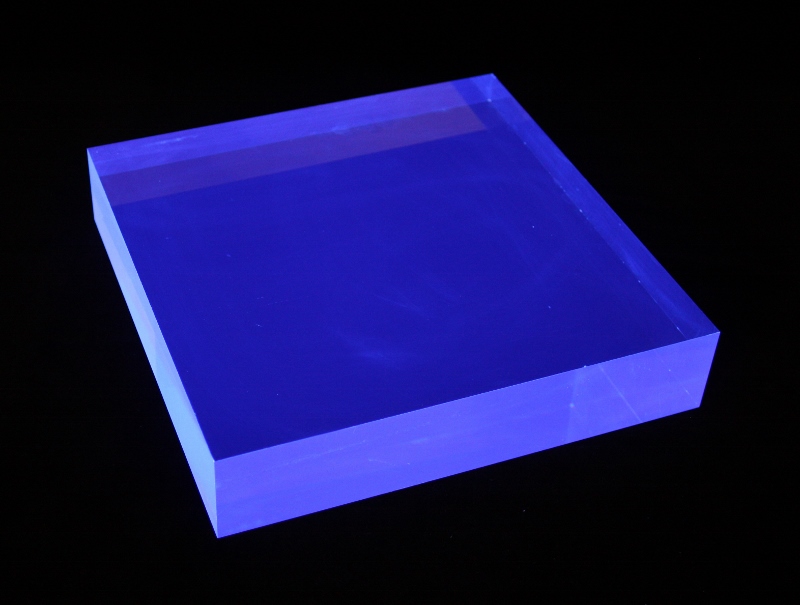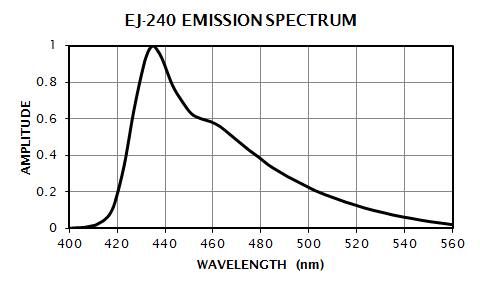LONG DECAY TIME
EJ-240

This plastic scintillator has an unusually long principal decay time, 285 ns. Its primary application is to be used in combination with standard organic scintillators having typical decay times near 2 ns. Such "phoswich" detectors are usually constructed with the fast and slow scintillators combined to form one optical element viewed by a single photomultiplier with pulse shape discrimination electronics employed to identify the different pulses. The fast front scintillator is usually relatively thin providing dE/dX information, while the slow rear scintillator is relatively thick to provide the full energy signal. Although the PMT is mounted on the surface of the slow scintillator, the pulse from the fast scintillator is easily identified since it undergoes little degradation while passing through the slow scintillator.
EJ-240G, a green emitting variant, is also available with emission maximum at 490 nm.
| PROPERTIES | EJ-240 |
| Light Output (% Anthracene) | 41 |
| Scintillation Efficiency (photons/1 MeV e-) |
6,300 |
| Wavelength of Maximum Emission (nm) | 430 |
| Light Attenuation Length (cm) | 240 |
| Rise Time (ns) | 19.5 |
| Decay Time (ns) | 285 |
| No. of H Atoms per cm3 (x1022) | 5.19 |
| No. of C Atoms per cm3 (x1022) | 4.68 |
| No. of Electrons per cm3 (x1023) | 3.33 |
| Density (g/cm3) | 1.023 |
| Polymer Base | Polyvinyltoluene |
| Refractive Index | 1.58 |
| Softening Point | 75°C |
| Vapor Pressure | Vacuum-compatible |
| Coefficient of Linear Expansion | 7.8 x 10-5 below 67°C |
| Light Output vs. Temperature |
At 60°C, L.O. = 95% of that at 20°C
No change from -60°C to 20°C
|
| Temperature Range | -60°C to 60°C |
|
Chemical Compatibility
Attacked by: Aromatic solvents, Chlorinated solvents, Ketones, Solvent bonding cements, etc.
Stable in: Water, Dilute acids and alkalis, Lower alcohols, and Silicone greases.
It is safe to use most epoxies with this scintillator.
|
